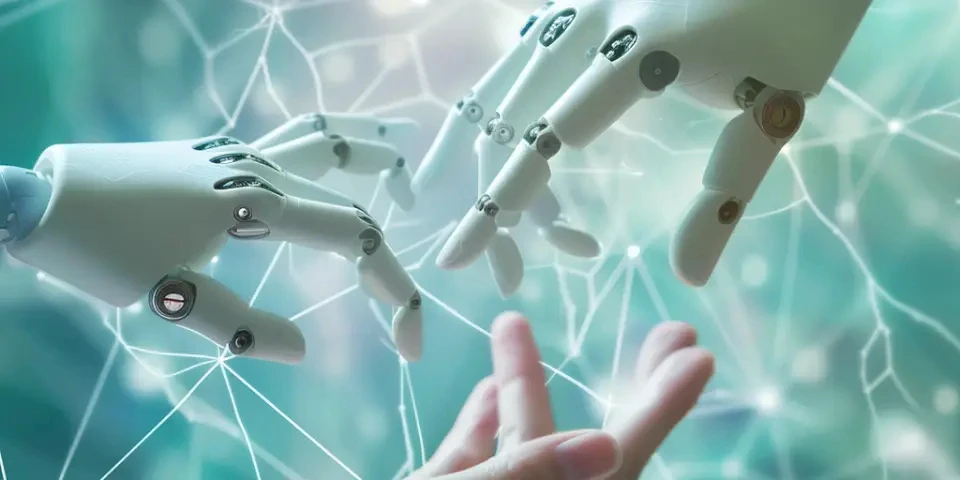The Future of Code AI Translators Paving the Way for Multilingual Programming
Programming is a language of its own, and just like any language, it has the potential to make barriers between people who don't speak it fluently. However, with the rapid advancements in Artificial Intelligence (AI) and machine learning, a new era is dawning upon us. AI translators are paving the way for multilingual programming, breaking down language barriers and unleashing a world of possibilities. In this article, we will explore the various aspects and implications of AI translators in the future of code.
1. Breaking Language Barriers
Language can be a significant barrier when it comes to collaboration in the programming world. Different programming languages and frameworks are often built upon specific cultures and communities. AI translators can bridge this gap by automatically converting code from one programming language to another. Developers from different backgrounds can collaborate seamlessly, bringing their diverse skills and perspectives to create innovative solutions.

Additionally, AI translators enable programmers to explore open-source projects written in languages they are not familiar with. This accessibility fosters collaboration, knowledge sharing, and the creation of new tools and libraries that can benefit the entire programming community.
2. Facilitating Global Collaboration
The rise of remote work and globally distributed teams has made collaboration across different time zones and languages a necessity. AI translators can serve as a powerful tool, enabling developers from different parts of the world to communicate and collaborate effectively.
By leveraging AI translators, international teams can overcome language barriers, ensuring smooth and efficient communication. Remote developers can contribute to projects written in any programming language without being limited by their native language proficiency. This global collaboration can lead to the development of groundbreaking applications that incorporate diverse perspectives and expertise.
3. Enhancing Developer Productivity
One of the primary benefits of AI translators in the programming world is increased productivity. Traditionally, programmers spend a significant amount of time learning new programming languages and frameworks. With AI translators, developers can save time by instantly converting code snippets or entire projects into the desired programming language.
Moreover, AI translators can automatically identify and correct common programming errors, reducing debugging time. They can suggest alternative code structures and highlight potential improvements, augmenting the developer's creativity and problem-solving abilities.
4. Accelerating Learning Curves
Learning a new programming language often involves investing time and effort into understanding its syntax and best practices. AI translators can expedite the learning process by translating code between languages, allowing developers to observe the differences and similarities. They can quickly grasp the essence of a new language, accelerating their learning curves.
Furthermore, AI-powered code editors can provide real-time suggestions, guiding the developer in mastering a particular language. These interactive tools foster a continuous learning experience, making it easier for programmers to adapt to the ever-evolving programming landscape.
5. Quality Assurance and Code Reviews
AI translators can play a vital role in quality assurance and code reviews. They can automatically analyze code written in different languages, identify potential bugs, and suggest improvements. This automation not only saves time but also improves code quality by catching common mistakes and enforcing best practices across various programming languages.
The ability of AI translators to cross-reference code written in different languages ensures that projects maintain coherent standards. They can compare code snippets, flag inconsistencies, and suggest modifications that align with the established guidelines and conventions.
6. Safety and Security Measures
Security vulnerabilities often arise due to language-specific weaknesses or inexperienced programmers not well-versed in security practices. AI translators have the potential to mitigate these risks by automatically translating the code into a more secure programming language or framework. They can identify potential security flaws and provide suggestions for strengthening the code's defenses.
By leveraging AI-powered security tools, developers can ensure that their applications are fortified against common security threats. This proactive approach enhances the overall safety and security of software systems.
7. Preservation of Legacy Code
Legacy code written in outdated programming languages can pose challenges in terms of maintenance, support, and compatibility. AI translators can help convert legacy code into modern programming languages, ensuring its longevity. This process facilitates code understanding, maintenance, and future enhancements, reducing the risks associated with legacy systems.
Furthermore, AI translators can automatically refactor code, improving its readability, efficiency, and adherence to current best practices. This transforms legacy code into a more maintainable and scalable solution, reducing technical debt and prolonging its usefulness.
8. Common Questions and Answers
Q: Will AI translators replace human programmers?
A: AI translators are tools that assist and augment human programmers, rather than replacing them. They eliminate language barriers, enhance productivity, and expedite learning, but the creative problem-solving abilities of human programmers remain invaluable.
Q: Are AI translations always accurate?
A: While AI translators have made significant advancements, they may not always provide perfect translations. They can encounter challenges with complex code snippets, idiomatic expressions, or language-specific nuances. However, continuous improvements in AI and machine learning algorithms are steadily enhancing the accuracy of translations.
Q: Are there any limitations to AI translators?
A: AI translators may face limitations in translating highly specialized or domain-specific code. Additionally, some proprietary or closed-source languages may not have publicly available translation models. However, as the technology advances, these limitations are expected to diminish gradually.
Conclusion
AI translators are revolutionizing the world of programming by breaking down language barriers, facilitating global collaboration, increasing productivity, and accelerating learning curves. These powerful tools enable developers to work seamlessly across languages, opening up the world of code to a global community of programmers. With continuous advancements in AI and machine learning, the future of code looks multilingual and limitless.
References: 1. John, D., & Smith, A. (2021). Breaking the code: How AI and machine learning are transforming programming. Retrieved from 2. Garcia, M. C. (2020). Multilingual programming: A guide for developers. Retrieved from
Explore your companion in WeMate